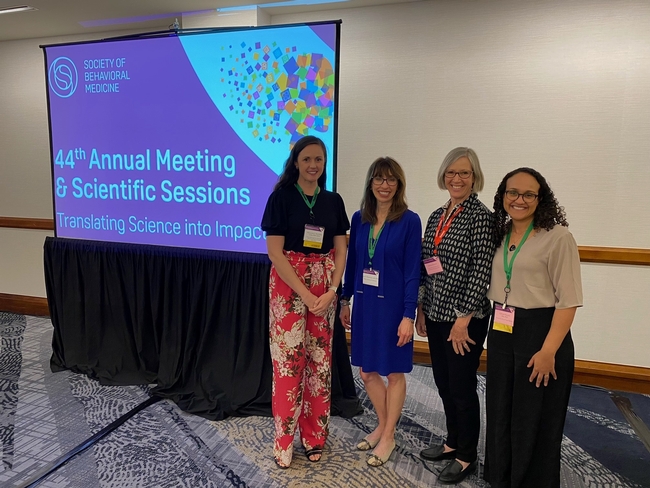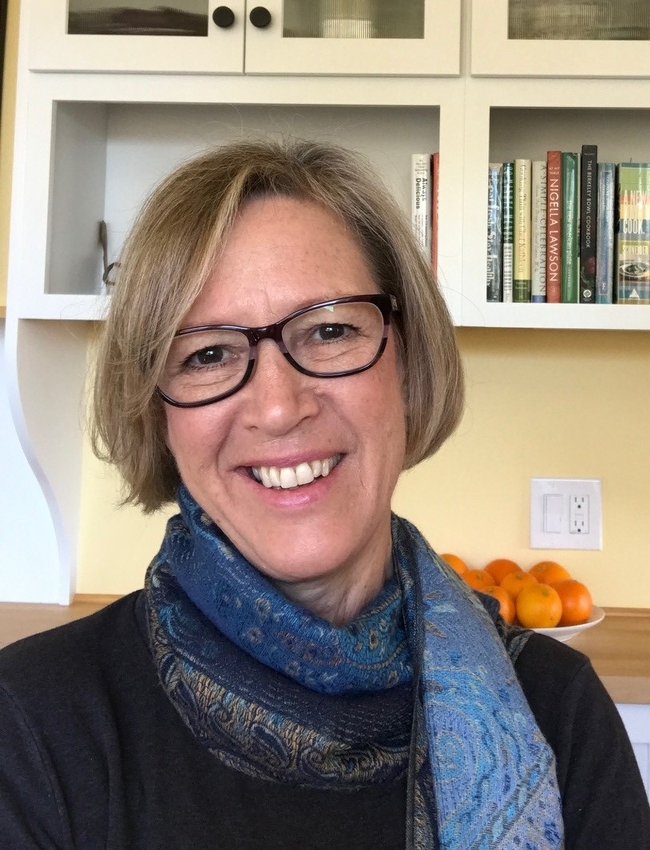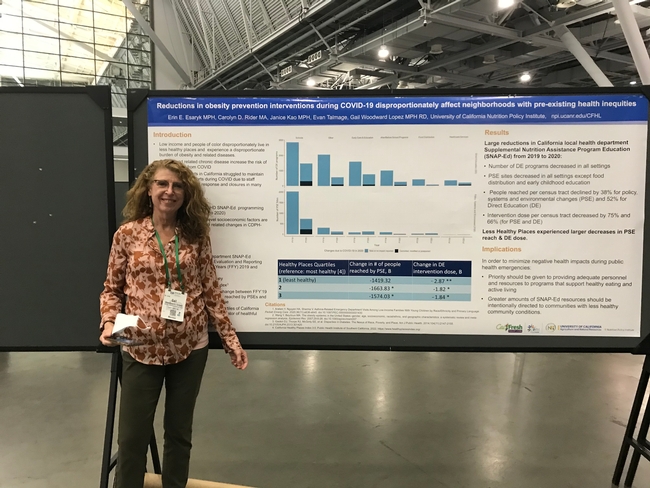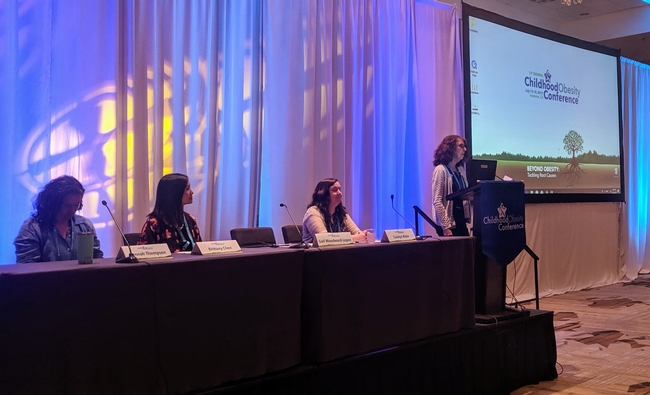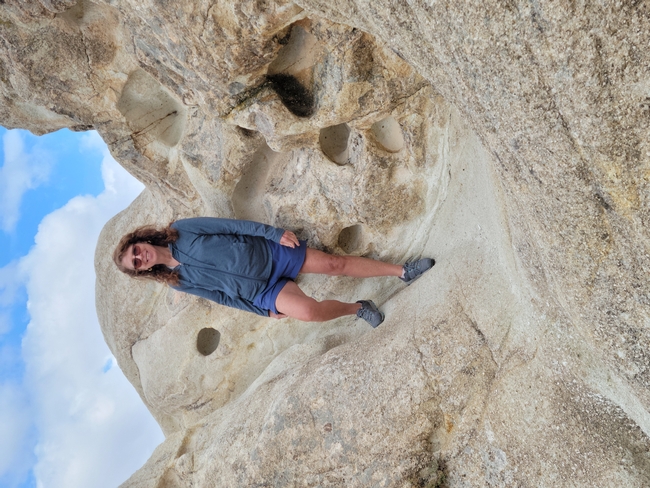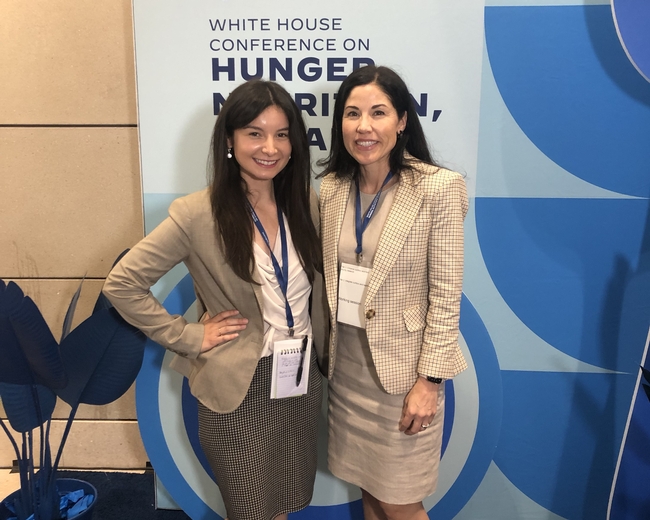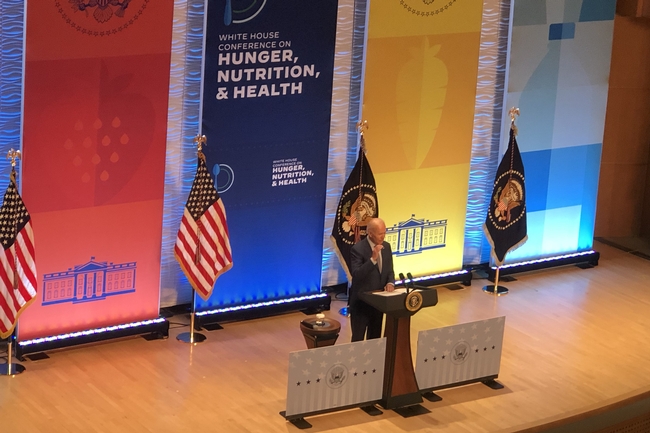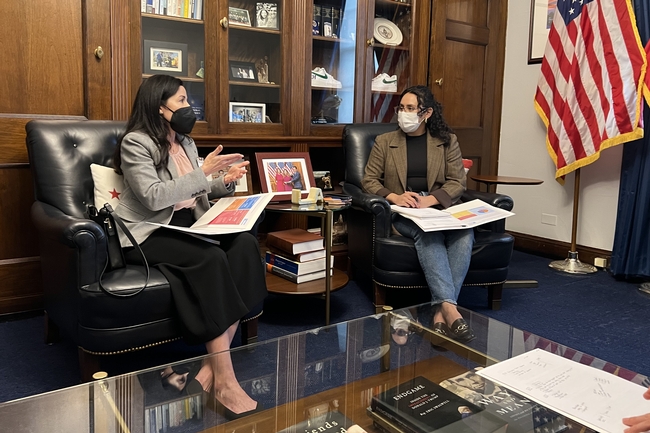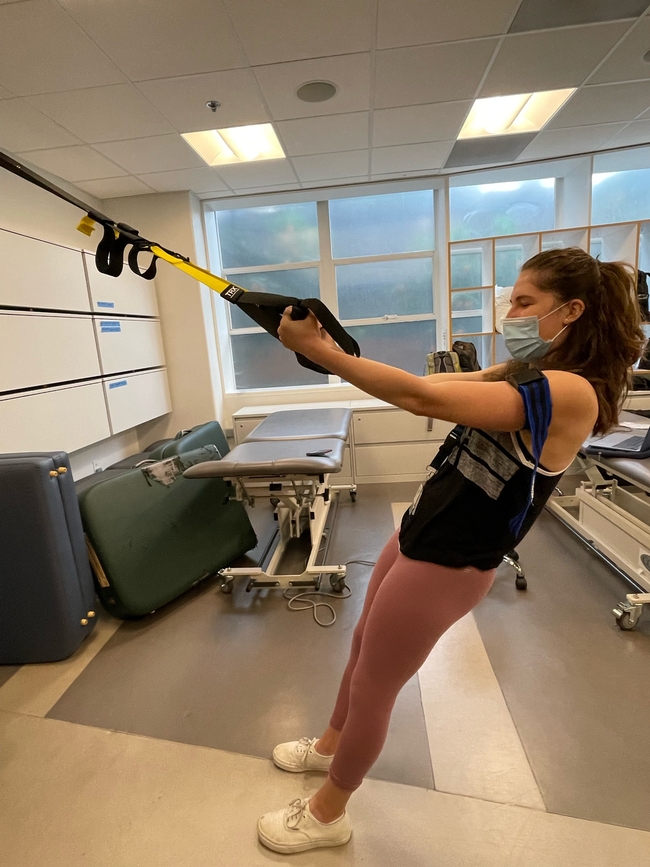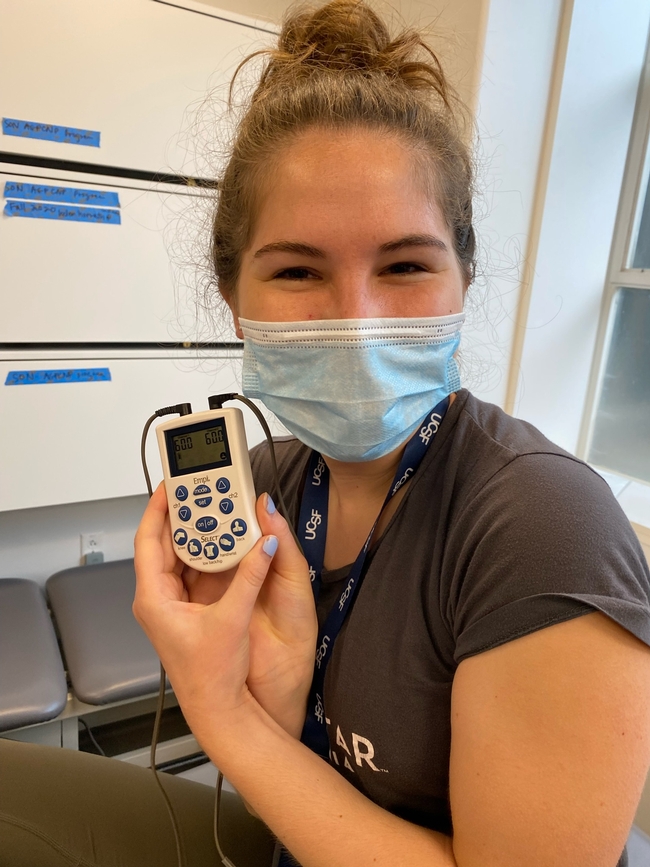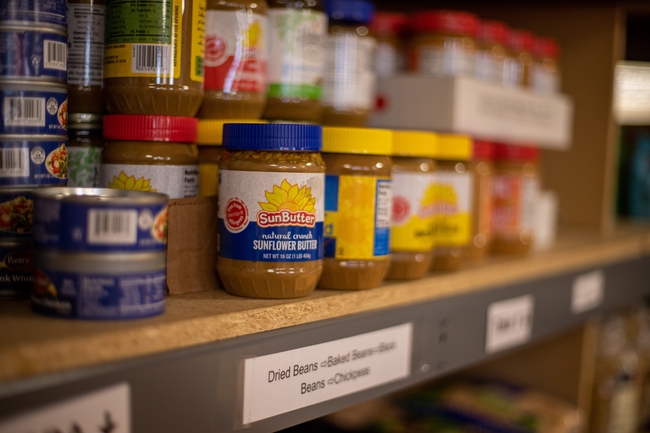Posts Tagged: Lorrene Ritchie
College students eligible for food assistance deterred by confusing requirements
Modifying Farm Bill could reduce barriers to SNAP for students and improve nutrition
Inadequate access to food can harm college students' health and academic performance. A recent University of California research study in the Journal of Nutrition Education and Behavior investigated why UC students who are eligible for the federal Supplemental Nutrition Assistance Program (SNAP) – the nation's largest food assistance program – do not receive the benefit.
“Based on our study findings, eliminating the extra requirements for college students to qualify for SNAP would go a long way in ensuring that more eligible students get the support they need to meet their basic food needs,” said study coauthor Lorrene Ritchie, director of the UC Nutrition Policy Institute, which is part of UC Agriculture and Natural Resources.
A 2015 study by NPI found four in 10 UC students didn't have enough money to buy sufficient food for a healthy lifestyle. To promote better health, UC has taken steps to ensure students are aware of SNAP, established campus food pantries and other basic needs resources.
"In California, SNAP is known as CalFresh and despite policies and communication to improve college students' access to CalFresh, participation remains low, with approximately 78% of those eligible not receiving benefits," said lead study author Suzanna M. Martinez, associate professor in the Department of Epidemiology and Biostatistics at UC San Francisco.
For insight on why low-income UC students aren't receiving the benefits, Martinez, Ritchie and colleagues at UC San Francisco and Nutrition Policy Institute consulted county agencies that process student CalFresh applications. The researchers interviewed county staff in nine counties that are home to UC campuses: Alameda, Los Angeles, Merced, Orange, Riverside, San Francisco, Santa Barbara, Santa Cruz and Yolo.
While CalFresh benefits have mainly been paid by the federal government through the Farm Bill, counties contribute and county agencies are responsible for implementing policies, determining eligibility, processing applications and distributing funds.
“With the Farm Bill still up for reauthorization, these findings could provide insight into how to strengthen SNAP policy related to eligible students,” Martinez said.
The researchers conducted focus groups and interviews with county staff to determine how agency workers interpret the complex criteria for students to meet CalFresh eligibility.
Their questions focused on how students' applications differed from those of community members, steps taken when processing student applications, student-specific training and suggested improvements to the process.
Five central themes were identified in the interviews:
- More consistent policy dissemination and program administration is needed
- Student exemptions and the application process are perceived as challenges for students
- Key supports for successful student applications include carefully reviewing applications for potential exemptions, providing useful resources to students, and campus partnerships
- Tracking policy changes is burdensome
- Eliminating student rules and treating students as regular clients would be more equitable
The researchers found that CalFresh rules are challenging for students as well as the county agency staff.
Also, eligibility requirements, written over 50 years ago, are based on the assumption that college students are supported by middle-class families.
The research supports simplifying the student CalFresh process to increase participation for eligible students, especially for historically underrepresented racial and ethnic groups and low-income students for whom equitable access to CalFresh benefits is critical.
“Once students get confused or don't know what they need to do, they don't follow through with their application,” one CalFresh eligibility worker told the researchers.
During the COVID-19 pandemic, some federal and state requirements were waived or relaxed for students.
“The timing of this study resulted in a natural experiment since COVID-19-related SNAP modifications streamlined the student application process and reduced administrative burden,” Martinez noted. “These modifications alleviated some challenges discussed by county workers, confirming existing opinions to eliminate the student rules.”
Ritchie said, “We hope our research informs policy to remove some of the barriers so students no longer have as much difficulty getting the food they need.”
This study was funded by the California State Legislature, which provided funding to the University of California to address students' basic needs (UC Basic Needs Initiative).
Rauzon, visionary in community health evaluation, retires from NPI
Nutrition Policy Institute researcher developed techniques that help identify effective public health programs
When Suzanne Rauzon and May Wang were in the master's of public health program at the University of California, Berkeley during the mid-1980s, Wang knew that her classmate had unique brilliance to bring to their field.
“You know how you vote for the person in high school who's most likely to succeed? That was Suzanne,” said May Wang, a professor of community health sciences in the UCLA Fielding School of Public Health. “Suzanne was always ahead of every one of us; she was so visionary and forward-thinking and I think we were all – to be honest – a little bit in awe of her.”
Decades later, as Rauzon prepares to retire in January 2024 as director of community health at the Nutrition Policy Institute, she has fulfilled that exceptional promise. Her many contributions are helping communities identify the most effective programs to benefit public health.
Lorrene Ritchie, director of NPI (an institute under UC Agriculture and Natural Resources), said that Rauzon has played a pivotal role in translating research findings into community action and policy change. She added that Rauzon has brought an extraordinary combination of strategic vision for the overall direction of nutrition studies and tactical savvy to anticipate the needs of project funders and communities.
“Few people can bring both of those skills – efficiently complete the day-to-day tasks as well as be a big-picture thinker,” Ritchie said. “She has been so instrumental in contributing to NPI's impacts.”
A unique skill set to tackle complex challenges
Part of what makes Rauzon unique in her field is her extensive experience in the private sector. After attaining her master's degree, Rauzon developed a comprehensive employee worksite wellness initiative at a telecommunications company – a new set of programs that led the field in the 1990s.
“Suzanne was, is and has always been very visionary,” Wang said.
After years in the corporate space, however, Rauzon leaped at the chance to return to academia (and reunite with Wang) in 2001 at UC Berkeley's Center for Weight and Health, a precursor to NPI. Working with center co-director Patricia Crawford, Rauzon said the project to investigate the effects of sugar-sweetened beverages was a “perfect fit” for her.
Concerned with rising childhood obesity, the researchers studied the significant differences in health outcomes for students in high schools that limited access to beverages such as soft drinks, versus schools that did not.
“That field in general – looking to limit sugar-sweetened beverages – started with a focus in schools, and expanded into other environments (such as college campuses) over the years, and has continued to be a focus in public health,” Rauzon said, “all the way up to work now on limiting sugar-sweetened beverages access in other public institutions.”
Rauzon's change-management and communication skills also were crucial in studying the revolutionary School Lunch Initiative in the Berkeley Unified School District – a collaboration with chef Alice Waters' Chez Panisse Foundation and the Center for Ecoliteracy to engage young people in the growing and preparation of food. Brought in to evaluate the efficacy of the program, Wang and Rauzon found they had to alter their mindset and methods when working with partners who were responding to oft-changing circumstances.
Rauzon's cross-sector perspective, practical know-how and people skills in cultivating positive relationships with district staff and educators were instrumental in successfully completing studies with as much rigor as possible in real-world settings such as schools.
The researchers created new analytical tools to evaluate health interventions developed by communities themselves – as opposed to programs engineered by academics and applied to community members with the expectation that they would accept it.
“Most researchers, to be honest, are still striving to do that with communities,” Wang said. “It is an incredibly challenging task because communities will do what they want to do – and what they need to do – to respond to the needs of people.”
Wang, who now trains academics in community-based participatory research, said that the ground-up paradigm has been shaped by Rauzon's thinking. “A lot of the ideas I have today really came about from our work together on the School Lunch Initiative,” Wang said.
A legacy of new methods, mentoring early-career professionals
One of Rauzon's longest-running – and most complex – projects has been the evaluation of community health interventions across the country, including a variety of Kaiser Permanente initiatives to promote healthy eating and physical activity.
“What was interesting about that work was we really were trying to understand the combined effects of doing a lot of different things that are related – and to see the overall effect that can have on the community,” said Rauzon, noting that interventions ranged from nutrition classes to policy changes to park and bike-safety improvements.
Wang said some of their findings, particularly from one study in Los Angeles County, suggest that effective programs are early childhood interventions (including an emphasis on breastfeeding), home visitations by nurses and social workers to vulnerable households, and partnerships with retailers to make healthy food choices more accessible.
In the process, the researchers helped pioneer new research tools – including interdisciplinary “systems mapping” approaches in which computer scientists discern linkages among various programs and their effects, and the highly influential “community intervention dose index” concept that can be used to evaluate multiple intervention strategies within a community.
In addition to Rauzon's contributions in research and evaluation, Ritchie also highlighted her role in supervising and mentoring students and NPI staff and researchers during her 20-plus years with the UC – the role in which Rauzon takes the most pride.
“While I made a contribution to community health in effective interventions and how to measure them,” Rauzon said, “I would say personally the most rewarding part of the work I've done over the last couple of decades is seeing the growth and development and advancement of people who have worked for me and who have really taken off in their own careers – that to me has been immensely satisfying.”
As an emeritus researcher, Rauzon will continue to support NPI professionals and their research, and she added that she's excited to embark on a new partnership – with her husband, a geographer – to mitigate impacts of climate change on human and environmental health across the globe.
People interested in supporting Rauzon's legacy and the ongoing work in health and nutrition can donate to NPI's Student Fellowship, which provides students from underrepresented groups the opportunity to work on NPI research and be mentored by NPI researchers.
Woodward-Lopez retires after 23 years of leadership in advancing nutrition
Nutrition Policy Institute researcher influenced obesity research, SNAP-Ed evaluation
Young people across California and the U.S. enjoy healthier, more nutritious food options at school, thanks to the contributions of Gail Woodward-Lopez, who retired on July 1 as the associate director of research at the Nutrition Policy Institute, a part of University of California Agriculture and Natural Resources.
Woodward-Lopez officially joined UC ANR in 2015, when she and other researchers at the Atkins Center for Weight and Health at UC Berkeley merged with NPI. But her association with UC ANR goes back much further, as her work at CWH was always directed by UC Cooperative Extension academics – including the research that paved the way for California's “junk food ban” in schools.
Two bills, signed in 2005, set nutrition standards in California for “competitive foods”– the items sold in vending machines and from food service a la carte (as opposed to federally subsidized school meals). That legislation – which inspired similar policy changes across the country – was informed by the work of Woodward-Lopez and her colleagues, who had looked at the financial impact of establishing those standards.
“Our study was so pivotal that I literally had people calling me from the floor of the Senate or the Assembly when they were debating that legislation,” recalled Woodward-Lopez.
Changing perceptions of population weight gain
Originally intending to pursue a career in neurobiology, Woodward-Lopez found that lab work didn't suit her temperament. Seeking to work more directly on social issues, she embarked on a public health path, with an emphasis on nutritional aspects that incorporated her interest in biological sciences.
Woodward-Lopez's early work focused on a challenge that was just beginning to catch the attention of researchers: the rapid rise in the Body Mass Index (BMI) among the U.S. population. In tracing the causes of this epidemic, she and her colleagues shifted academic and public attention toward the host of environmental factors that contribute to weight gain – instead of focusing exclusively on an individual's choice to eat healthy and be physically active.
“Two decades ago, Gail led groundbreaking work to identify the determinants of obesity when child obesity was emerging as a public health concern,” said Nutrition Policy Institute Director Lorrene Ritchie. “While we and other researchers across the nation were working on generating more evidence to inform action, she had the vision that we could use a variety of existing data – from trends to trials – to point to the main causes.”
Many of the researchers' conclusions, which were published in the 2006 book “Obesity: Dietary and Developmental Influences,” stand to this day.
Helping to set the identity and agenda of the Center for Weight and Health when it was founded in 2000, Woodward-Lopez moved policy and practice beyond educational approaches and public awareness campaigns. As she noted: “No one thinks sugar-sweetened beverages are good for you.”
“Education alone is not going to work if people do not have access to the healthy foods and opportunities for physical activity, if they're not safe in their neighborhoods, or if they can't afford the healthy options,” she explained.
Given her seminal role in the field, Kaiser Permanente sought out Woodward-Lopez as a “thought partner” on the organization's community-based obesity prevention programs and school health work.
“Gail brought deep rigor and expertise, of course, but also a super-practical, community-focused perspective to our work,” said Loel Solomon, professor of health systems science at the Kaiser Permanente Bernard J. Tyson School of Medicine. “Her integrity and values around health equity were evident in everything we did together, and our communities are so much the better for it.”
Elevating and enhancing CalFresh Healthy Living
At the Nutrition Policy Institute, the focus of Woodward-Lopez's work has been refining the evaluation and delivery of SNAP-Ed, the educational component of the Supplemental Nutrition Assistance Program (commonly referred to as “food stamps”). Known in California as CalFresh Healthy Living, SNAP-Ed represents the largest single source of ongoing funding for nutrition and physical activity promotion in the state – outside of the WIC program which serves women, infants and young children.
“CalFresh Healthy Living can really impact millions of people,” Woodward-Lopez said. “For county health departments, this is one of their main sources of funding and provides the backbone for everything else they do in nutrition and physical activity.”
But given the variety of interventions implemented by health departments in response to local needs, determining the efficacy of those efforts is a daunting task. Woodward-Lopez and her NPI colleagues have been instrumental in devising creative approaches that help pinpoint the most effective public health measures.
For example, NPI researchers found that combining school policy changes with increased opportunities for physical activity during the school day was the best strategy to encourage student fitness. They discovered that reductions in nutrition programs during the COVID-19 pandemic disproportionately affected communities of color. And they also continue to emphasize that interventions need to be tailored to the specific cultural and political conditions within a community.
“I think in all of the work we do, we try to come up with those practical applications – what does this mean for communities? How can we do this differently? How are our findings actionable?” Woodward-Lopez said.
Her contributions toward the evaluation of California Department of Public Health SNAP-Ed have impressed and inspired Lauren Whetstone, chief of CDPH's Research, Evaluation and Strategic Alignment Section, Nutrition Education and Obesity Prevention Branch.
“Gail and her team have elevated the quality of our evaluation work and the evaluation support that we provide to local health department grantees,” said Whetstone, who has worked with Woodward-Lopez for nearly a decade. “Gail contributed substantially to statewide SNAP-Ed evaluation as well, again working collaboratively to ensure high quality evaluation. Our work is all the stronger due to Gail's dedication to excellent SNAP-Ed evaluation.”
To the benefit of the field and community health, Woodward-Lopez said she plans to remain engaged in her life's work.
“I'd really like to get more involved in policy through advocacy and through doing things like writing letters to the editor or social media commentary,” she said. “I already have some ideas for some editorials I want to write.”
And while she looks forward to spending more time with loved ones, traveling, and pursuing her interests in art and music, Woodward-Lopez will remain a guiding voice for advancing public health.
“Gail's leadership in public health nutrition – even after she retires – is a testament to her dedication,” Ritchie said. “She not only has contributed to sustainable changes in California and nationally, she has been a mentor to me and so many others in the field who will strive to continue her legacy.”
People interested in supporting Woodward-Lopez's legacy and the ongoing work in health and nutrition can donate to NPI's Student Fellowship, which provides students from underrepresented groups the opportunity to work on NPI research and be mentored by NPI researchers.
Nutrition Policy Institute work underpins historic White House conference
Researchers contribute recommendations for national strategy on hunger, nutrition, health
At the first White House Conference on Hunger, Nutrition and Health convened since 1969, President Biden announced on Sept. 28 a national strategy “to end hunger in America and increase healthy eating and physical activity by 2030 so fewer Americans experience diet-related diseases.” Much of the foundational research undergirding the strategy has been informed in part by the Nutrition Policy Institute, a program of UC Agriculture and Natural Resources.
“Science is the work of many – and no one study answers all the questions – but we have a tremendous body of work that has contributed to this conference, building from all the programs and changes that were made from the last conference,” said NPI director Lorrene Ritchie.
The original Nixon-era conference produced about 1,800 recommendations – and 1,600 were eventually implemented in the subsequent years, according to Stacy Dean, U.S. Department of Agriculture Deputy Under Secretary for Food, Nutrition and Consumer Services.
A litany of far-reaching programs grew from or were propelled by the 1969 conference: the School Breakfast Program, WIC (the Special Supplemental Nutrition Program for Women, Infants and Children), SNAP (the Supplemental Nutrition Assistance Program)-Ed and CalFresh Healthy Living UC, the Expanded Food and Nutrition Education Program, and more.
This history illustrates the potential for sweeping change from this 2022 conference – which gathered about 500 experts and advocates (with 1,000 more participating online) – and from the national strategy that represents the Biden-Harris administration's “playbook.”
“Does that document have everything in it that we would like? No – but, oh my goodness, if we could accomplish all the things that they've laid out, what a transformational impact it would have,” said Ritchie, adding that she was thrilled that the highest levels of government are prioritizing hunger and nutrition-related chronic disease.
Including beverages in the conversation
In the course of gathering ideas and input from across the country, conference organizers asked Christina Hecht, NPI senior policy advisor, to author and submit NPI recommendations on encouraging the public to choose water instead of sugary drinks. Those suggestions – which range from including water in the “MyPlate” dietary guideline graphic to ensuring that every public school has a water bottle-filling station – crystallized extensive, rigorous scholarship by a broad community.
“NPI's recommendations were built on lots of work by many water researchers and advocates over the years; they're based on many years of thinking by many people,” Hecht said.
Christina and Ken Hecht, NPI policy director, also submitted recommendations as part of the Sugar-Sweetened Beverage Reduction Workgroup, which brings together experts from national, state and local organizations. Several of their key proposals, such as targeting the marketing of sugary drinks and clarifying front-of-package nutrition labels, appear as recommended steps in the national strategy document.
Other nutrition policy changes compiled by Christina Hecht – like updating the Federal Food Service Guidelines used on federal properties and in federal programs – are also reflected in the national strategy, albeit without specifically mentioning sugary drinks. Nonetheless, Hecht believes doors have been opened for future discussions that could incorporate and promote healthy beverages.
“What those doors require are continuing to develop the evidence base, continuing to translate and share the evidence base, and continuing the advocacy to bring that evidence base to the attention of decision makers,” she said.
University of California setting an example
Suzanna Martinez, an NPI-affiliated researcher who attended the White House conference, said she hopes the convening generates momentum for two bills before Congress that would help alleviate food insecurity in higher education: one that provides funding for campuses to address students' basic needs, and another that reduces barriers to SNAP (Supplemental Nutrition Assistance Program, formerly known as food stamps). The national strategy document explicitly acknowledges that “SNAP's college student eligibility restrictions are out of date given the current population who seek higher education credentials.”
Martinez, an associate professor in the Department of Epidemiology and Biostatistics at University of California San Francisco, was invited to the conference because she's part of a group driving the UC's effort to halve the number of students facing food insecurity across the system by 2030. That commitment, and UC Berkeley's work on basic needs, were highlighted by Second Gentleman Douglas Emhoff during the closing plenary session.
“The work that we're doing here in California tends to set the stage for what happens in other states,” said Martinez, who also cited California's pioneering effort to provide meals for all public school students.
NPI's ongoing work evaluating universal school meals in California and other states is just one example of how its academics and staff are refining innovative programs so they can be adopted more effectively and broadly (perhaps nationally). In fact, the White House identified “healthy school meals for all” as the top strategy for improving food access and affordability, and Ritchie applauds the administration's consistent emphasis on early interventions for healthier outcomes.
“The earlier you can create healthy habits – meaning in utero all the way through childhood – the more likely you are going to have adults who don't end up with nutrition-related chronic diseases,” she explained. “The last thing you want to do is to wait until people are really sick before they start to change their habits.”
Another overarching theme that excites Ritchie is the national strategy's “whole of government” approach to addressing a host of nutrition and hunger issues. One example is how the strategy calls for agencies not traditionally associated with food to contribute to reducing waste, such as the Department of the Treasury clarifying tax benefits for businesses that donate food.
“Throughout the document, over and over again, there are countless examples of creating synergies across government agencies and with local and state governments that can help move the needle,” Ritchie said. “It's just this kind of bold call to action that we really need.”
Food pantries, improved CalFresh processes alleviate food insecurity on UC campuses
Nutrition Policy Institute researchers contribute to studies that inform policy changes
Marcela Gonzalez, who had wanted to be a physical therapist since she was a teenager, was in the final stage of realizing her dream.
But when she started in the PT program at the University of California San Francisco in 2021, a vexing struggle of her undergraduate years came back. Academic pressures and stomach troubles, compounded by financial worries, drained her of any energy and capacity to feed herself.
“I didn't eat; I lost a lot of weight because I just couldn't eat,” Gonzalez recalled. “I was too stressed out all the time; I was a mess.”
During her first year at UCSF, Gonzalez, for whom food has “always just been hard,” discovered that she qualified for CalFresh (California's version of the Supplemental Nutrition Assistance Program, formerly known as “food stamps”). Her participation in the program – as well as the presence of a campus food pantry – helped lift a heavy mental burden and allowed her to refocus on school.
To understand the mechanisms that connect eligible students with CalFresh benefits, which could greatly improve their lives and education, University of California researchers interviewed UC campus staff responsible for guiding undergraduate and graduate students through the application process. Their recently published study, which involved researchers at UC Agriculture and Natural Resources' Nutrition Policy Institute, illuminated several major facilitators and barriers to CalFresh enrollment.
Campus-county coordination, boosting staffing key factors
Ensuring that college students have access to CalFresh is especially crucial, given that food insecurity affects that segment of the population roughly four times the rate of the general population, according to the study's principal investigator and co-author Suzanna Martinez, an associate professor in the department of epidemiology and biostatistics at UCSF.
It's estimated that more than 40% of college students face uncertain access to healthy food – and inflation, the rising cost of attending college and increasingly unaffordable housing are likely to swell those numbers.
That's why researchers say it's critical for campus staff who work on CalFresh outreach to collaborate with the financial aid office and the county office that administers the CalFresh program locally. Through close coordination, staff members can determine if students meet the necessary exemptions and help them with the paperwork.
“When that happens, it's much easier than when a student applies without their campus Basic Needs coordinator, or when they just go to the county and apply on their own,” Martinez explained. “Maybe they don't know all of the verification documents that have to be included, or they might not know their financial aid status.”
Erin Esaryk, NPI research data analyst and first author of the study published in the Journal of Nutrition Education and Behavior, also highlighted the need for increased campus staffing to help with CalFresh enrollment, as well as more outreach by campus and county staff to student populations about the benefits.
“When there's a lot of outreach, that helps alleviate some of the stigma, to normalize the receiving of CalFresh,” Esaryk said.
Helping others worry less about food
Given her own history of travails, Gonzalez, the physical therapy student, wanted to help others at UCSF “de-stress” about food. In summer and fall 2021, she served as a “CalFresh ambassador” for her cohort of new PT students, developing presentations and guides that break down how to apply for or renew CalFresh benefits.
She became the go-to person for her classmates' questions on the logistics and details of applying for the program, and also encouraged fellow health-professional students who, like herself, did not think they would qualify.
“To take out less loans, or to not worry about food a little bit every week, is a great thing,” said Gonzalez, pointing out that subtracting food costs allows students to shave down their loans.
After helping introduce her classmates to CalFresh, she transitioned to working at the food pantry at the Parnassus campus. In addition to setting up and distributing the items, Gonzalez also posts on Instagram and TikTok (@ucsf_basicneeds) to promote the “food market,” which attracts about 100 students and campus community members every Thursday afternoon.
“You never know what you're going to get, but there's so much really good, fresh produce,” she said.
Campus food pantries deliver health benefits
Researchers are also studying how campus food pantries affect students' overall health, including easing the challenges of anxiety, depression and sleep deprivation. Another recent study published in the Journal of Nutrition Education and Behavior analyzed health-survey responses of 1,855 undergraduate and graduate students at all 10 UC campuses – before and after access to a campus food pantry.
“What we found was that students reported improvements in their perceived health and sufficient sleep,” said UCSF's Martinez, the lead author. “We also found that they reported fewer depressive symptoms, compared to before having access to the food pantry.”
By 2019, all UC campuses had established food pantries, although nationwide only about 25% of four-year colleges have one. The significant health benefits reported by UC students in this study give researchers hope that campus food pantries will see additional governmental support, in California and beyond.
“It was important to evaluate whether the food pantries were actually making a difference…if you don't have numbers or evidence, then you're not going to get funded to support future programming,” Martinez said.
Research guides state policy changes
Studies of food insecurity in the college setting have already informed policymaking aimed at smoothing the application process for CalFresh – benefits regarded by Martinez as a better long-term solution than food pantries, which constitute an emergency “short-term response” to the problem.
One example of the research's impact is a law passed last year in California that requires community colleges and California State University campuses to designate a campus-county liaison who would help students procure social services, including CalFresh. A separate law expanded the list of training programs within which students would potentially qualify for CalFresh, and another bill currently under consideration by the state Legislature would make the processing of students' CalFresh applications more consistent from county to county, through more standardized training of staff.
Meanwhile, on the research front, Esaryk, Martinez and their colleagues are completing a follow-up study on students and CalFresh enrollment, this time looking at the perspectives of county staff. And while their broader goal remains clarifying and streamlining student eligibility rules and processes at all levels, they remain focused on students and meeting their needs.
“Right now, our main mission is just to try to increase awareness of CalFresh for students and to let them know they may be eligible,” Martinez said, “and then assist them through that application process so they can actually get the benefits.”
In addition to Esaryk and Martinez, NPI director Lorrene Ritchie and Laurel Moffat of Washington State University are also authors of the CalFresh/SNAP benefits study, while co-authors of the college food pantry study are Ritchie, Gwen Chodur of UC Davis, Sevan Kaladijian of UC Irvine and Michael Grandner of the University of Arizona.

